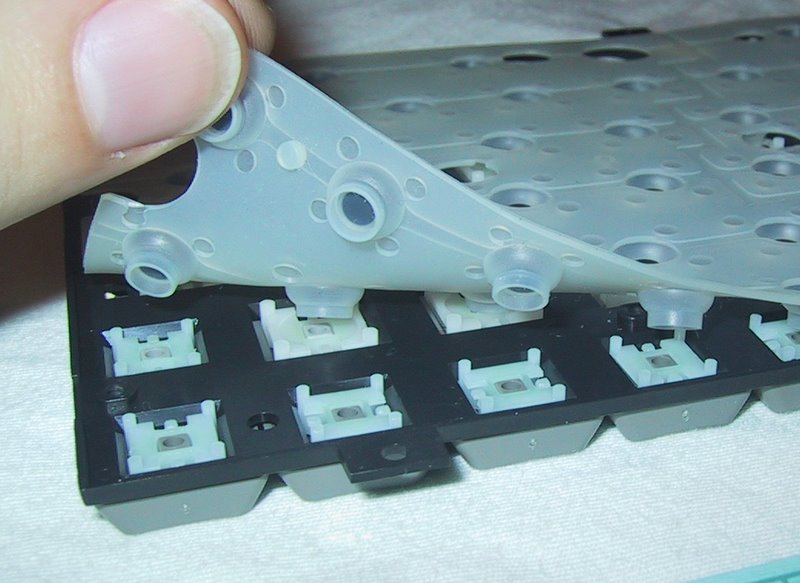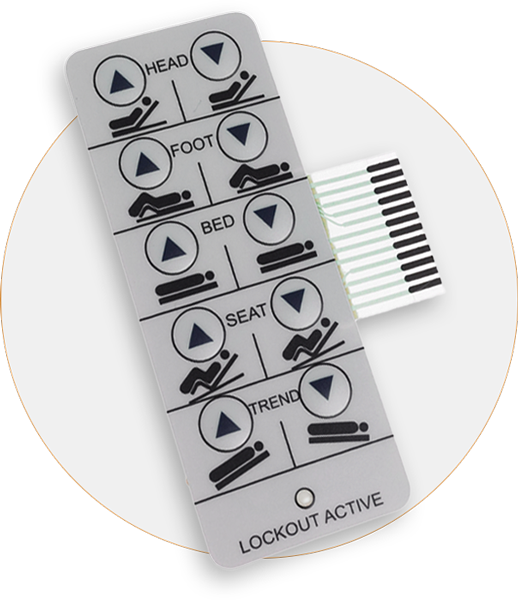A good membrane switch manufacturer provides customizable design options for advanced applications.
A good membrane switch manufacturer provides customizable design options for advanced applications.
Blog Article
Everything About Membrane Switch: Comprehending Its Layout and Performance
When you assume about the control user interfaces in contemporary tools, membrane buttons frequently come to mind. Allow's discover what collections membrane switches over apart from various other control systems.
What Are Membrane Switches?

Membrane buttons can also be customized regarding form, dimension, and graphics, enabling manufacturers to develop unique user interfaces customized to specific items. On the whole, membrane layer switches play a significant duty in improving customer experience throughout a large array of applications.
Just How Membrane Layer Switches Work
When you push a secret on a membrane layer switch, it activates an uncomplicated yet efficient device. The leading layer, commonly made of flexible product, presses down onto a conductive layer beneath it. This activity bridges the gap in between conductive traces, completing an electrical circuit. As quickly as the circuit closes, it sends out a signal to the device's controller, which interprets your input.
You'll see that the responsive responses varies based upon the button design, offering either a soft click or a much more obvious response. When you launch the trick, the membrane go back to its initial setting, resuming the circuit and stopping the signal. This procedure occurs virtually immediately, guaranteeing a responsive customer experience.
Membrane buttons are popular because of their resilience and resistance to dirt and wetness, making them optimal for various applications, from home home appliances to clinical tools. Comprehending this operation assists you value their prevalent usage.
Trick Components of Membrane Switches
Recognizing the essential components of membrane layer switches is fundamental for understanding their capability and style. The protective layer guards against environmental variables and use, expanding the switch's lifespan. By recognizing these elements, you'll gain understanding into exactly how membrane layer switches run and their significance in numerous applications.
Materials Used in Membrane Layer Switch Layout
The performance and resilience of membrane layer switches over greatly depend on the products used in their layout. You usually experience polyester and polycarbonate as key substrates as a result of their excellent stamina and flexibility. These materials stand up to scratches and chemicals, making them perfect for requiring atmospheres.
The conductive layers typically make use of silver or carbon, chosen for their integrity and conductivity. membrane switch manufacturer. Silver gives remarkable performance, while carbon is a cost-effective alternative. For the overlay, you may take into consideration a matte or shiny coating, depending on your aesthetic needs and customer experience
Make particular to choose adhesives that endure ecological variables like temperature level and humidity. Choosing the right products will ensure your membrane layer switch stands the test of time.
Design Considerations for Membrane Buttons
While developing membrane layer buttons, it's essential to consider numerous elements that affect their functionality and user experience. Beginning by focusing on the design and button size; make certain they're intuitive and special info easy to navigate. Take into consideration the responsive feedback you intend to offer-- will customers require a noticeable click or a softer touch? Additionally, assume regarding the products you'll use, as they'll affect longevity and visual appeals.
Validate your layout fits ecological variables, like moisture or temperature level variations, which might influence performance. By meticulously taking into consideration these elements, you'll produce a membrane layer switch that enhances functionality and contentment.
Applications of Membrane Layer Buttons
Membrane switches are versatile parts located in different applications, from commercial equipment to consumer electronics. You'll see their effect in makers that call for sturdy user interfaces and in gadgets that benefit from streamlined designs. Recognizing these applications aids you appreciate the capability and practicality of membrane layer switches in daily innovation.
Industrial Devices Use
When you're looking to enhance the functionality of industrial devices, membrane layer switches use a reliable option that combines toughness with straightforward style. These buttons are best for extreme settings, giving resistance to dirt, moisture, and chemicals. Embrace membrane switches to enhance your operations and enhance total efficiency.
Consumer Electronic Devices Combination
In the domain of consumer electronics, membrane layer switches play an essential function in boosting customer communication and tool performance. You'll discover them in tools like microwaves, remote controls, and gaming consoles, supplying a seamless way to communicate with technology. Their streamlined style enables very easy integration right into various products, making controls instinctive and user-friendly. With their capacity to integrate graphics and backlighting, you can enjoy a contemporary aesthetic that complements the gadget's total appearance. Membrane buttons also ensure resilience and resistance to dust and moisture, prolonging the lifespan of your electronics. By selecting membrane layer buttons, you boost not just the functionality but additionally the design of your tools, making everyday communications smooth and enjoyable.
Benefits and Negative Aspects of Membrane Layer Switches
While membrane layer switches supply a series of advantages, they likewise feature some drawbacks that you should consider. One significant benefit is their small design, making them ideal for space-constrained applications. They're likewise cost-effective, giving a resilient remedy with a reduced production price. Additionally, their seamless surface area is easy to clean, boosting hygiene see it here in atmospheres like hospitals.

Membrane layer switches can have a shorter life expectancy contrasted to mechanical buttons, specifically under heavy usage. They can likewise be much less responsive, which might impact user responses throughout operation. Stabilizing these pros and disadvantages will certainly assist you determine if membrane layer buttons are the ideal fit for your task.
Often Asked Questions
How Much Time Do Membrane Layer Changes Generally Last?
Membrane layer changes normally last between 5 to one decade, depending upon use and environmental problems. useful content You'll intend to assess variables like wear, exposure to wetness, and temperature changes to gauge their long life effectively.
Can Membrane Switches Over Be Personalized for Details Layouts?
Yes, you can customize membrane buttons to fit details styles (membrane switch manufacturer). You'll have the liberty to choose colors, forms, and formats that match your job's needs, ensuring they blend flawlessly with your overall aesthetic
What Is the Price Variety for Membrane Layer Switch Over Production?
The expense range for membrane switch production commonly falls between $1 and $10 per device, depending upon aspects like style intricacy, amount, and materials. You can obtain quotes from manufacturers to find the very best choice.

Are Membrane Changes Waterproof or Immune?
Membrane layer buttons can be developed to be waterproof or immune, relying on products utilized and construction methods. If you need them for wet environments, guarantee you define those demands during the style process.
How Do Membrane Switches Compare to Conventional Switches?
Membrane switches are generally thinner and much more versatile than conventional switches, supplying a streamlined style. They're usually easier to clean up and incorporate, but may not offer the tactile comments you're used to with mechanical choices.
Verdict

Report this page